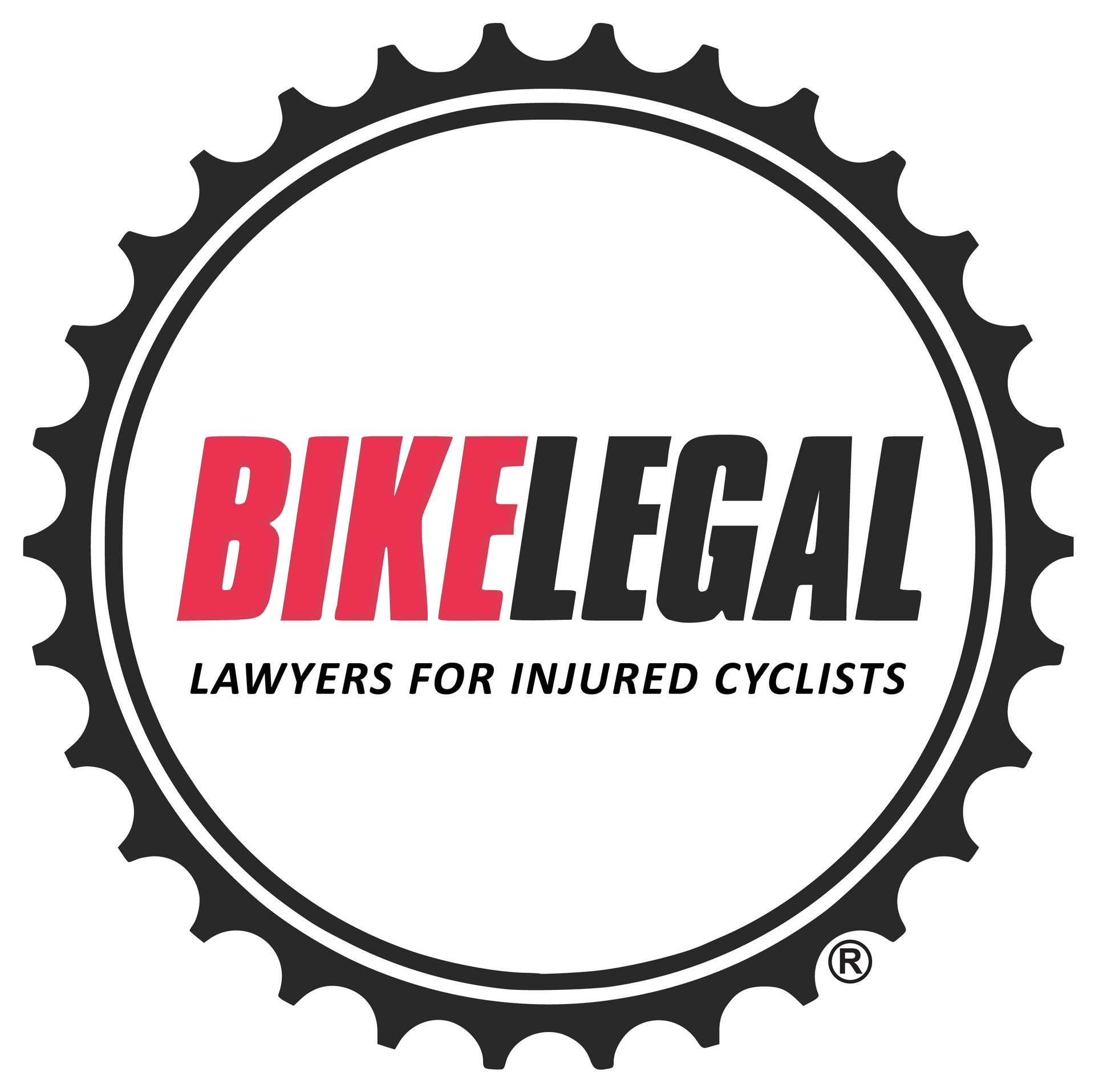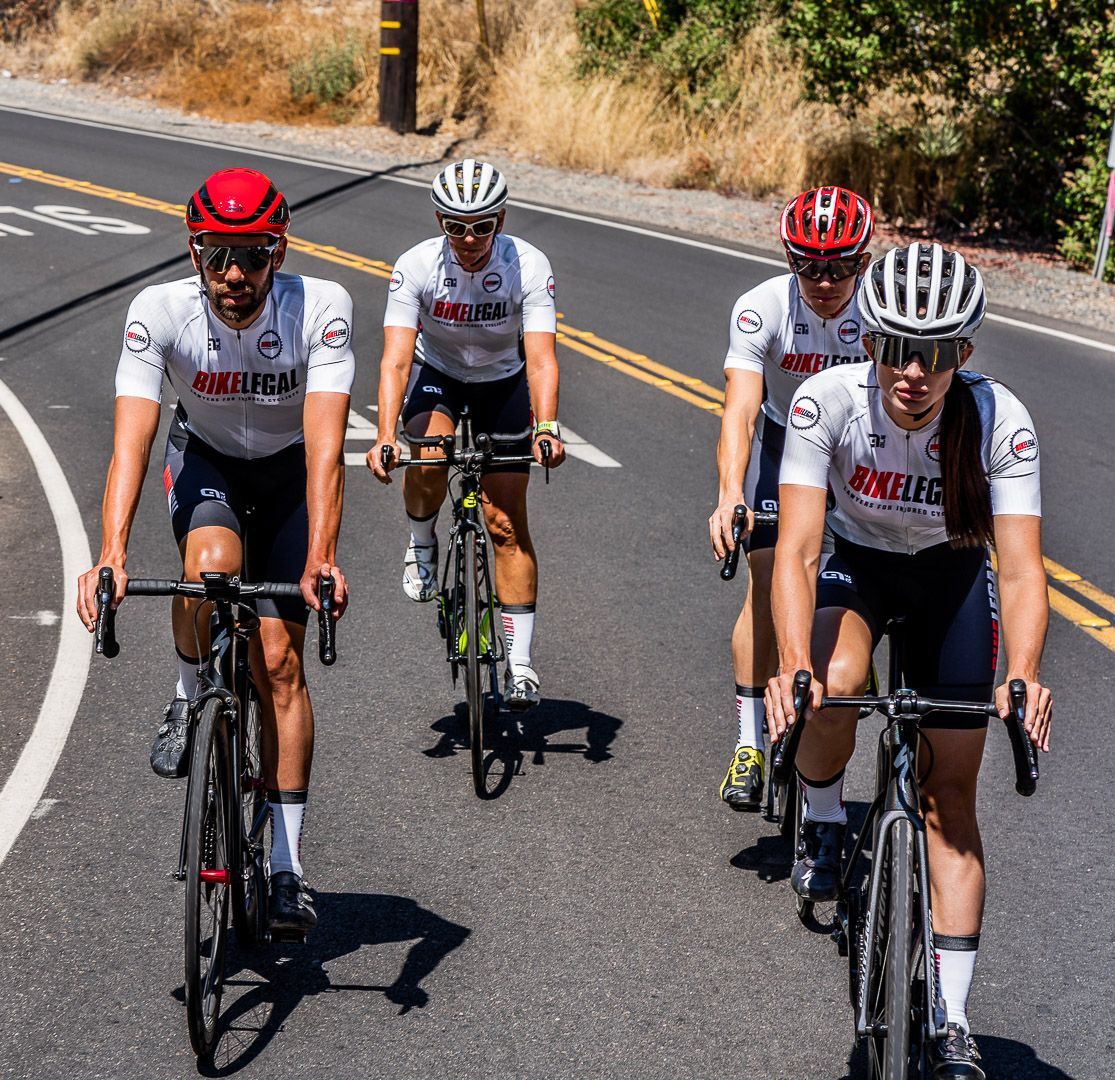Explore the Top 10 Bike-Friendly US Cities for Cycling
Follow us on
social media!
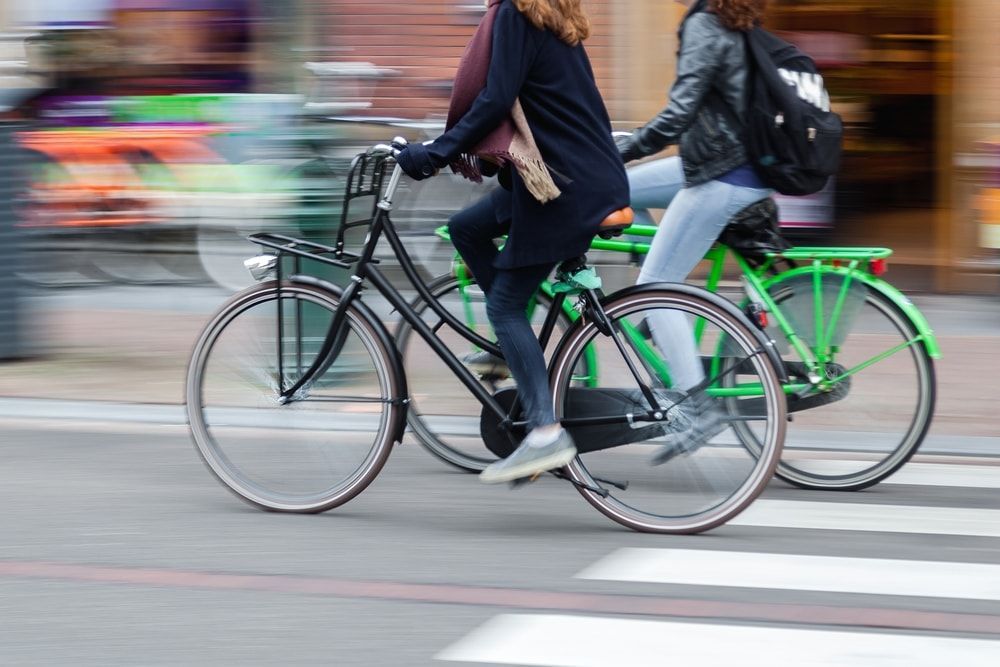
The need for more bicycle-friendly cities has never been clearer. In 2022 alone, car drivers were responsible for 1,105 cyclist deaths—the highest number ever reported. Additionally, the surge in popularity of e-bikes has led to an increase in the number of people riding bikes, intensifying the demand for better and safer cycling infrastructure.
In this article we will highlight:
- What makes a city bicycle-friendly?
- Why do we need more bicycle-friendly communities?
- Criteria for bicycle-friendly cities rankings
- Recent statistics on bicycle safety
- Most bike-friendly cities in the U.S. with the best cycling infrastructure.
- Popular bike routes that showcase scenic and practical cycling paths.
- Major annual cycling events that celebrate and encourage community participation.
Through this discussion, we aim to show how collective efforts can significantly improve bicycle safety, making cycling a viable and safe option for everyone. Let's get started!
What Makes a City Bicycle Friendly?
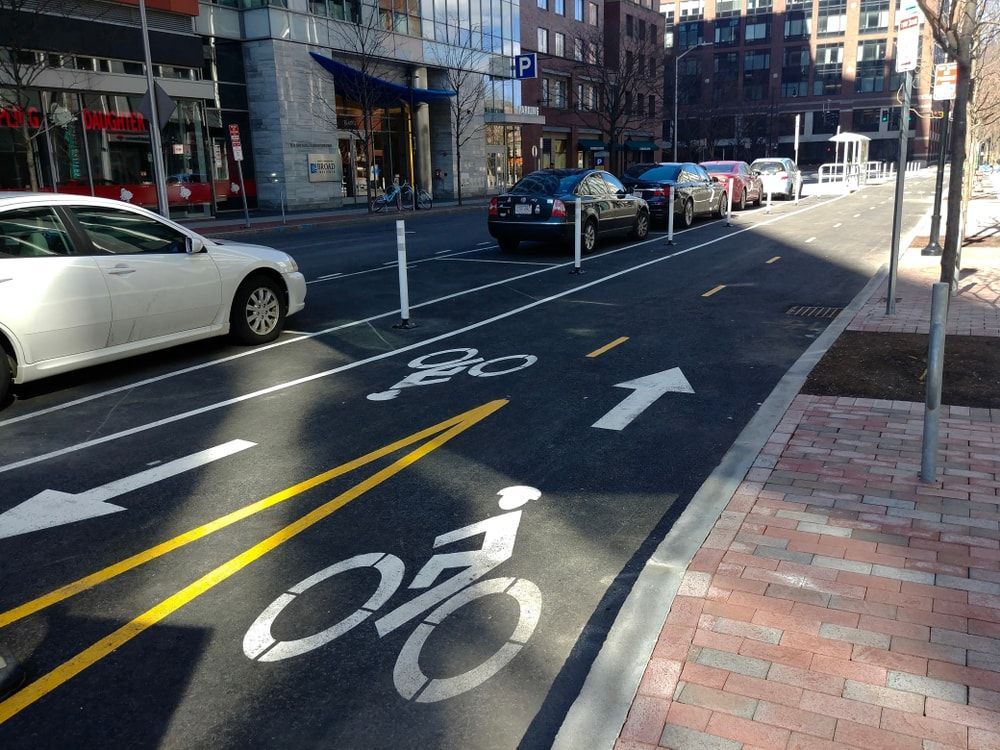
A bicycle-friendly city is defined as one that provides a safe, efficient, and convenient cycling environment for people of all ages and abilities. These cities encourage cycling for daily travel by incorporating comprehensive and well-maintained infrastructure, supportive policies, and community programs that promote cycling as a viable and sustainable form of transportation.
Key characteristics that make a city bicycle-friendly are:
- Infrastructure: The backbone of a bicycle-friendly city is its infrastructure. This includes well-maintained roads and paths designed specifically for cyclists. Cities that invest in dedicated cycling infrastructures, such as bike-only lanes and secure bike parking facilities, demonstrate a commitment to cyclist safety and convenience.
- Bike trails: Bike trails that are separated from motor traffic provide a safe and scenic environment for cyclists of all ages and skill levels. These trails are often recreational as well as functional, connecting neighborhoods and key areas within the city without the stress of navigating through busy streets.
- Protected bike lanes: Protected bike lanes are crucial for cyclist safety, especially in busy urban areas. These lanes are typically separated from vehicle lanes by barriers or are elevated, providing a secure space for cyclists to travel parallel to motor traffic without the risk of accidents.
- Safe travel routes to work and schools: Cities that provide safe cycling routes to work and educational institutions see higher rates of cycling. These routes need to be well-planned to minimize interactions with vehicular traffic and maximize safety and accessibility.
- Safe travel routes to shopping and dining areas: Similarly, ensuring that cyclists can safely travel to shopping centers and dining areas is important. This not only supports local businesses but also promotes a more active, sustainable lifestyle among residents.
- Percentage of people who commute by bicycle: A higher percentage of bicycle commuters often indicates that a city has successfully implemented bike-friendly policies. It reflects public trust in the safety and efficiency of cycling infrastructure.
- Network of protected bike lanes and paths: A comprehensive network of protected lanes and paths allows for extensive, safe cycling throughout the city. This network should connect various districts and key locations, making cycling a viable option for most urban travel.
- Weather: Although not directly controllable, the local weather plays a significant role in how bicycle-friendly a city can be. Cities with milder climates often see more year-round cyclists compared to cities with harsher weather conditions.
- Bike shops and resources: Access to bike shops and other cycling-related resources is essential for maintaining and encouraging a thriving cycling community. These facilities provide necessary services like repairs, equipment sales, and cycling advice.
- Bike share programs: Bike share programs increase accessibility to bicycles, allowing individuals to rent bikes for short periods. This is especially useful for tourists and residents who do not own bikes but wish to navigate the city via cycling.
- Air quality: Good air quality is crucial for outdoor activities like cycling. Cities with lower pollution levels are more conducive to biking, as cyclists are exposed to the elements and can be affected by poor air quality.
Why We Need More Bicycle-Friendly Communities?
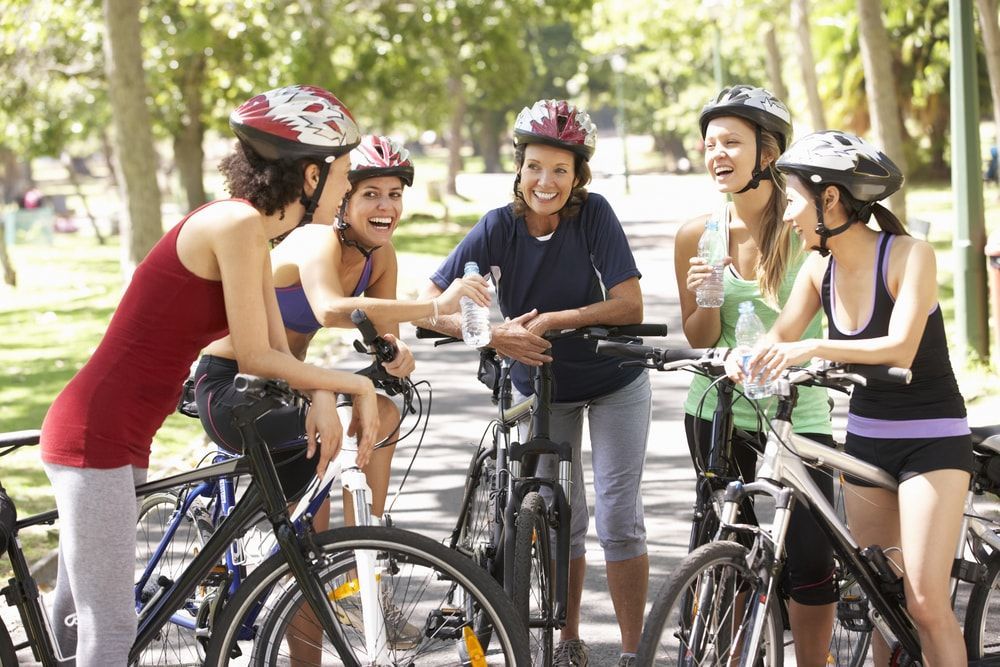
The need for more bicycle-friendly communities is driven by a variety of compelling reasons, from enhancing safety to promoting economic growth.
Here’s why increasing the number of bike-friendly cities is crucial:
- Safety: By decreasing the number of cycling-related accidents, injuries, and fatalities, we can make biking a safer option for commuting and recreation. Proper infrastructure, such as protected bike lanes and traffic-calmed streets, significantly reduces cyclists' risk of collisions with vehicles.
- Reducing fear: The fear of riding a bike amidst busy traffic can deter many from cycling. Creating environments where cyclists feel safe and comfortable riding to work, school, or for leisure can increase bike usage. This includes not only infrastructure improvements but also public awareness campaigns to foster a culture of respect between cyclists and motorists.
- Increasing cyclist numbers: As more people feel safe and comfortable riding bikes, the number of cyclists will naturally increase. This shift can lead to a healthier population and reduced vehicular traffic, which is especially important in densely populated urban areas.
- Health benefits: Cycling is an excellent form of exercise that can help combat obesity, reduce cardiovascular disease risk, and improve overall mental health. Regular physical activity, such as biking, helps decrease stress and enhances the psychological well-being of individuals.
- Environmental impact: Bicycle-friendly communities contribute significantly to environmental conservation. Cycling produces zero emissions, which helps reduce air pollution and carbon footprints. Additionally, it reduces noise pollution and the urban heat island effect, making cities more livable.
- Economic benefits: Biking can also have substantial economic benefits. It reduces the need for expensive car ownership, lowering individual transportation costs. Furthermore, cyclists are more likely to shop locally, boosting local businesses. Cities that invest in bike-friendly infrastructure often see an increase in tourism and new businesses attracted by a vibrant, active community.
- Space efficiency: Bikes require far less space than cars, not just in terms of road width but also for parking. Increasing the number of cyclists can significantly reduce the need for large parking lots and crowded streets, allowing cities to be designed more efficiently and aesthetically.
Recent Statistics on Bicycle Safety
Understanding the latest statistics on bicycle safety is crucial for addressing the ongoing challenges cyclists face on the roads. Here are some key figures that highlight the state of cycling safety in recent years:
- In 2020, there were 938 fatalities among pedalcyclists, making up 2.4% of all traffic-related deaths for that year.
- In 2022, traffic crashes resulted in the deaths of 1,105 bicyclists.
- In the first half of 2023, eighteen cyclists lost their lives, marking a record number of fatalities under the Vision Zero initiative.
- According to the National Highway Traffic Safety Administration (NHTSA), 30% of all bicycle accident injuries involve a bicyclist being hit by a car.
- Moreover, 13% of injury-causing bicycle accidents are due to poorly maintained roads.
- More than half of all bicycle accidents occur during nighttime, highlighting the critical importance of proper bicycle and road lighting.
- In the United States, cycling is the third most popular outdoor activity, with 54.7 million people riding bikes in 2022.
- In 2023, approximately 42.24 million people participated in road or paved surface biking in the United States. This number represents a decrease of around 1.3 million participants compared to the previous year.
- As of December 2023, 14% of individuals aged 30 to 39 reported cycling two to five times per week. This data was collected in a 2023 survey that included 10,038 respondents.
Criteria for Bicycle-Friendly Cities Rankings
To evaluate and rank cities on their bicycle-friendliness, several key criteria are considered. These factors not only enhance the safety and enjoyment of cyclists but also indicate the city's commitment to promoting cycling as a sustainable mode of transportation.
The primary criteria used for ranking bicycle-friendly cities:
- Infrastructure: The least bike friendly city is the one that has issues with infrastructure. The foundation of any bike-friendly city is its infrastructure. This includes the quality, maintenance, and accessibility of cycling paths. Well-designed and strategically placed cycling infrastructure encourages more people to consider biking as a viable option for transportation.
- Bike trails and protected bike Lanes: Bike trails and protected bike lanes are crucial for ensuring cyclists' safety away from vehicular traffic. These features provide secure and enjoyable routes for people of all ages, promoting cycling as a safe recreational and commuting option.
- Safe travel routes: Accessibility of cycling routes to essential services and locations such as workplaces, schools, shopping centers, and dining areas is vital. Safe and direct routes encourage more people to bike regularly, reducing dependence on motor vehicles.
- Community engagement: The percentage of the population that commutes by bicycle reflects community engagement and acceptance of cycling. A high percentage is often indicative of a well-established cycling culture supported by appropriate infrastructure and community programs.
- Supportive amenities: A network of well-connected bike lanes, consideration of local weather conditions, availability of bike shops, and resources, as well as robust bike share programs, all contribute to a city's bike-friendliness. These amenities support both daily commuters and recreational cyclists.
- Environmental quality: The impact of air quality on the cycling experience cannot be overstated. Good air quality makes outdoor activities more enjoyable and healthier, encouraging more people to choose cycling over more polluting transportation modes.
- Safety measures and education: Effective safety measures, including clear signage, traffic calming, and cycling education programs, are critical. These initiatives help reduce accidents and improve mutual respect between cyclists and other road users.
- Legislative support: Cities that enact laws to protect cyclists and enforce safe driving practices demonstrate a strong commitment to creating a safe environment for cycling. This includes laws like safe passing distances, anti-harassment protections, and measures to reduce speed limits in residential areas.
- Innovative solutions: Adoption of innovative solutions such as real-time bike traffic monitoring, mobile apps for route planning, and smart bike lights also play a role in enhancing a city’s bicycle friendliness. These technologies make cycling more accessible and safer.
1. Portland, Oregon
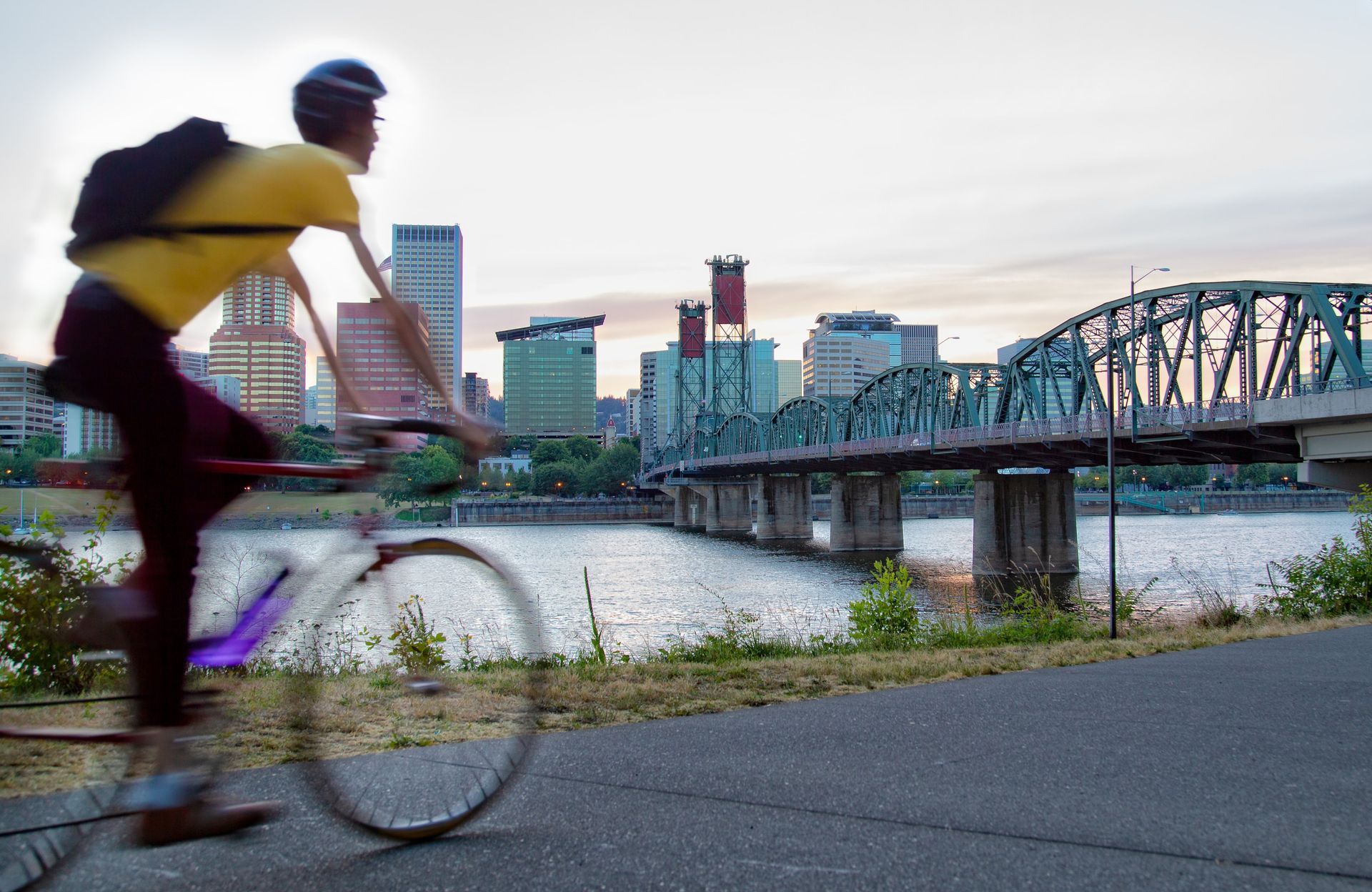
Portland, Oregon, is renowned as a haven for cyclists, earning the top spot as the most bike-friendly city in the U.S. With 6% of Portland's workforce commuting by bicycle, the city has successfully integrated cycling into its daily transportation patterns.
Bike infrastructure
- This bike city offers over 400 miles of bikeways, including dedicated bike lanes, off-street paths, and bike boulevards.
- Portland's bike-share program, BIKETOWN, offers electric-assist bicycles that can be rented per minute. This program is designed as an easy, affordable, and convenient transportation option.
- Developing "neighborhood greenways," residential streets with low auto traffic volumes and speed limits of 20 miles per hour or less, makes them safer for cyclists and pedestrians.
Annual cycling events
- Pedalpalooza: A month-long festival every June featuring hundreds of participant-organized bike rides with diverse themes, celebrating bike culture citywide.
- Portland Century: This late summer event offers a 100-mile ride, among other distances, highlighting Portland's beautiful landscapes and urban views.
- Providence Bridge Pedal: This is one of the most extensive community bike rides in the U.S., held annually in August. It allows cyclists to traverse Portland's scenic bridges, including some that are typically closed to bikes.
- Worst Day of the Year Ride: Takes place in February, challenging cyclists to endure the cold and wet weather with options for an 18-mile urban route or a tougher 40-mile route.
Popular bike routes
- Springwater Corridor: This 20-mile flat, paved trail runs from the Southeast Waterfront to Boring, Oregon, and is suitable for all skill levels.
- Eastbank Esplanade: A scenic loop along the Willamette River with views of the downtown skyline, connects to the Springwater Corridor.
- Mount Tabor: A challenging 3-mile round trip up an extinct volcano with steep sections for a good workout.
- Willamette Greenway Trail: This trail consists of approximately 30 miles of connected paths along the Willamette River's west side. It is excellent for wildlife and scenic views.
- Banks-Vernonia State Trail: This 21-mile trail follows a former railway line through forests and bridges, ideal for a nature-filled outing.
2. Minneapolis, Minnesota
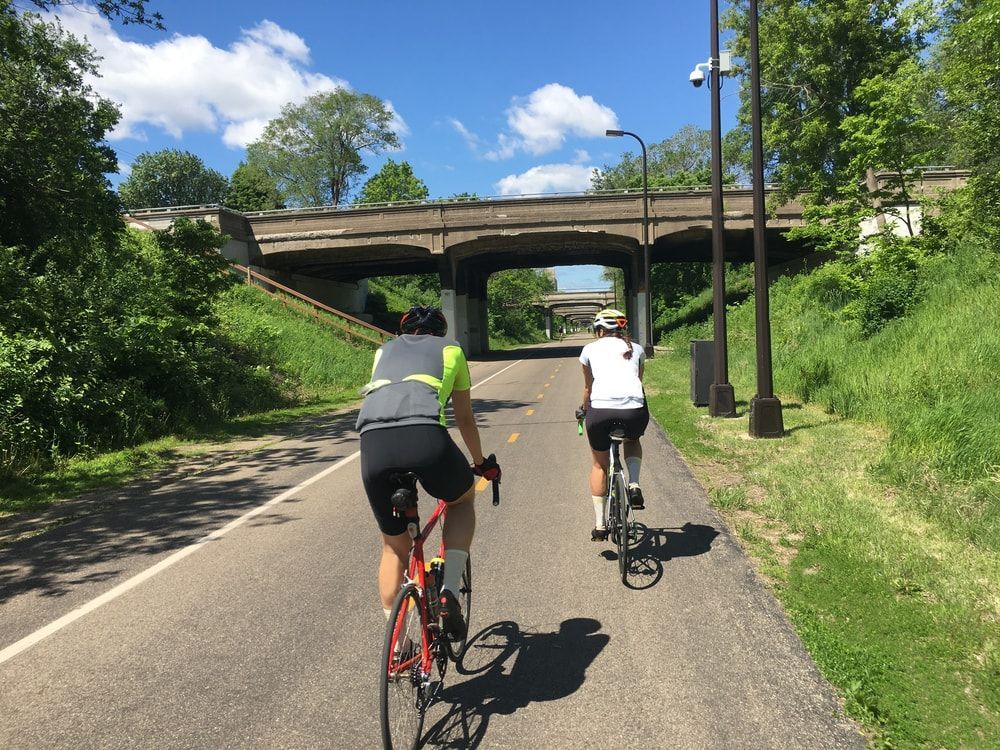
Minneapolis stands out as a premier destination for cyclists, reflecting its commitment to sustainable and active transportation. The city was ranked fourth in Bicycle Magazine's 2018 list of the best bicycling cities in the United States. About 0.7% of workers in Minneapolis choose bicycles as their primary mode of transportation for commuting daily.
Bike infrastructure
- There are 16 miles of on-street protected bikeways in Minneapolis. These protected paths offer a safer cycling experience by physically separating cyclists from motor vehicle traffic.
- The city boasts 98 miles of bike lanes and 101 miles of off-street bikeways and trails. These facilities provide extensive coverage and accessibility, allowing cyclists to navigate the city safely and conveniently.
Annual cycling events
- Twin Cities Bike to Work Day: An event encouraging people to bike to work. It's part of a national event in May during National Bike Month.
- Stupor Bowl: Held annually in February, this is a large, unsanctioned urban bike race through the streets of Minneapolis and St. Paul, combining speed and navigational challenges.
- The Powderhorn 24: A community-oriented, 24-hour bike race around Minneapolis’s Powderhorn Park. Cyclists and teams compete to complete as many laps as possible, with stops for community engagement and fun.
- Minneapolis Bike Tour: This non-competitive event takes place in September and offers a scenic tour of Minneapolis’s byways and parks. It typically features multiple distances to cater to a variety of fitness levels.
Popular bike routes
- Grand Rounds Scenic Byway: This 51-mile loop features scenic views around Minneapolis, including Lake Harriet and Bde Maka Ska, and is suitable for long, varied rides.
- Midtown Greenway: A 5.5-mile east-west corridor in south Minneapolis, mostly traffic-free, ideal for both commuting and recreational biking.
- Cedar Lake Trail: A 3-mile trail linking downtown Minneapolis to the western suburbs, known for its smooth surface and connectivity to longer routes.
- Stone Arch Bridge and St. Anthony Main: This 2-mile scenic route along the Mississippi River provides stunning views of the city skyline.
- Chain of Lakes: This route includes about 13.3 miles of trails looping around several of the city’s most famous lakes.
3. San Francisco, California
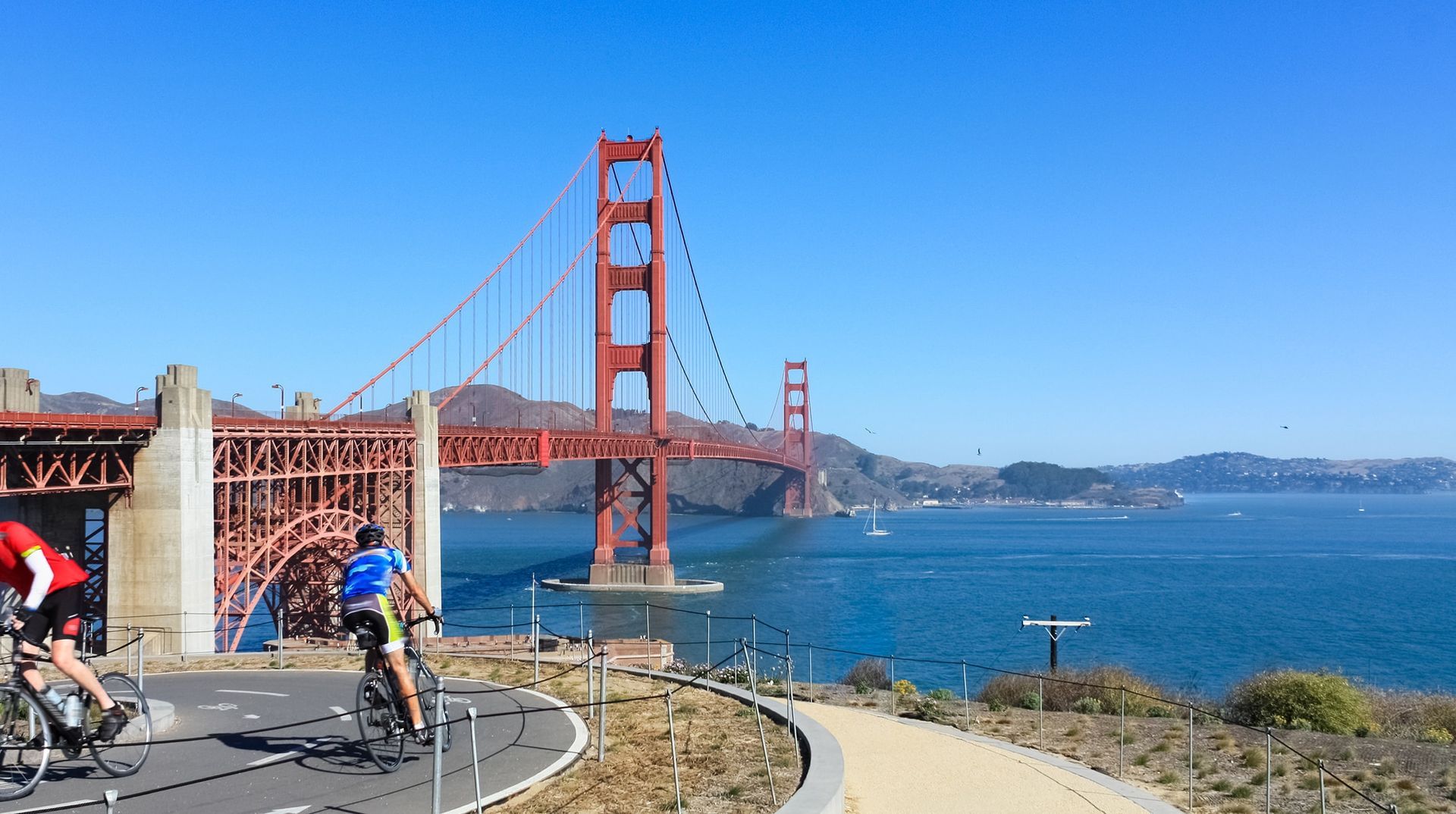
San Francisco is the 3rd most bikeable city with a rich cycling history, serving as a hub for bikers for over 130 years. According to a Census report, 3.4% of workers commute by bicycle, San Francisco offers a compact and dense urban environment that is ideal for short biking trips to work or recreational activities.
Bike infrastructure
- Many of the city's streets have dedicated bike-only lanes, highlighted with bright green paint for better visibility. Additionally, the city employs sharrows (shared lane markings) to denote lanes shared by cyclists and drivers, facilitating safer coexistence on the road.
- San Francisco is boosting bike parking by adding 3,000 new racks and enhancing secure parking options, supporting local cyclists and those biking to transit stations like BART and Caltrain.
- The city has been expanding 5 new car-free zones within parks and on specific streets to make urban spaces more cyclist-friendly.
Annual cycling events
- Escape from Alcatraz Triathlon: A prestigious event with a challenging ride through San Francisco and the Golden Gate Bridge.
- Tour de Fat: In the summer, New Belgium Brewing hosts this festival, which celebrates cycling with live music, beer, and sustainable practices.
- Levi's GranFondo: A major mountain biking event in Sonoma County’s wine country, suitable for all levels and offering varied scenic routes.
Popular bike routes
- Golden Gate Bridge to Sausalito: This route offers stunning views of the Golden Gate Bridge and the bay. After crossing the iconic bridge, many riders continue to the charming town of Sausalito.
- The Embarcadero: A relatively flat and scenic route along the waterfront, the Embarcadero stretches from AT&T Park to Fisherman’s Wharf. It's perfect for a leisurely ride with plenty of spots to stop and enjoy the sights.
- The Wiggle: A favorite among local commuters, the Wiggle is a zig-zagging route that minimizes hills between Market Street and Golden Gate Park.
- Twin Peaks: For those looking for a challenge, the ride up to Twin Peaks offers a strenuous climb but rewards cyclists with panoramic views of the entire city.
4. Boulder, Colorado
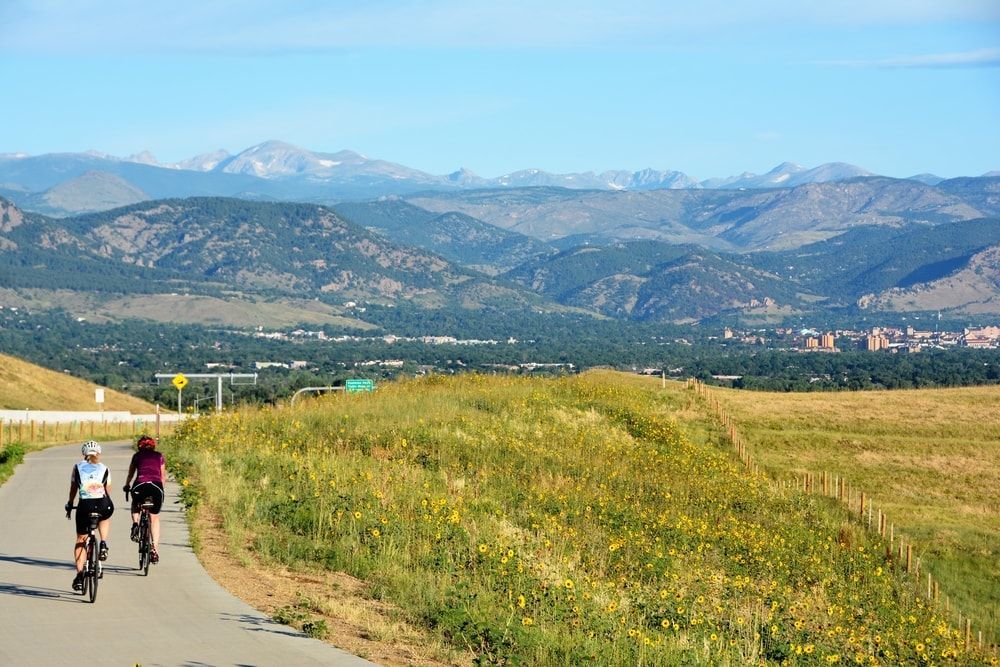
Boulder, Colorado, is one of the top bike-friendly cities in the United States. The city boasts an impressive record of no bike fatalities since 2016, highlighting its commitment to cycling safety. Boulder offers an extensive network of on and off-street bike trails, parks, and dedicated urban bike paths catering to mountain biking enthusiasts and recreational cyclists.
Bike infrastructure
- The city has unique features like tall concrete curbs for bike lane protection adorned with vibrant mural art from local creators.
- Cycle-centric cafes in Boulder provide welcoming bike shops for cyclists to relax and refuel, with coffee, food, and beverage options at establishments like Full Cycle, The Tune Up Tavern & Espresso, and Rapha.
- 300 cruisers can be rented for $8 for 24 hours from 47 kiosks around the city, making it easy for residents and visitors to explore on two wheels.
- Additionally, nearly 50 Boulder Bicycle stations are strategically located around town, further enhancing access to shared bicycles.
- The city features over 300 miles of designated bike lanes, ensuring safe and extensive routes for cyclists.
Annual cycling events
- Boulder Roubaix Road Race: A challenging race known for its mixed terrain, including dirt and pavement sections, inspired by the European classic Paris-Roubaix.
- Buffalo Bicycle Classic: This fundraising ride benefits student scholarships at the University of Colorado, Boulder. It offers multiple route lengths across picturesque settings.
- Tour de Boulder: This family-friendly event features routes of varying difficulties, allowing participants to explore Boulder's beautiful landscapes at their own pace.
- Ironman Boulder: Though primarily a triathlon, this event includes a rigorous bike portion through Boulder's rolling hills, attracting elite athletes worldwide.
Popular bike routes
- Boulder Creek Path: A scenic 5.5-mile route perfect for all levels, running from Boulder Canyon to the city's eastern edge with flat, easy terrain.
- Valmont Bike Park: Offers 42 acres of varied terrain for mountain bikers, including jumps, pump tracks, and single-track sections.
- Lee Hill Drive: This steep climb in North Boulder challenges experienced cyclists. It is popular for training and offers rewarding views.
- South Boulder Creek Trail: Features a blend of flat paths and gentle climbs through grasslands and woods, great for spotting wildlife.
- Cherryvale Road: A quieter, rural ride ideal for cyclists seeking longer routes with minimal traffic and pastoral scenery.
5. Denver, Colorado
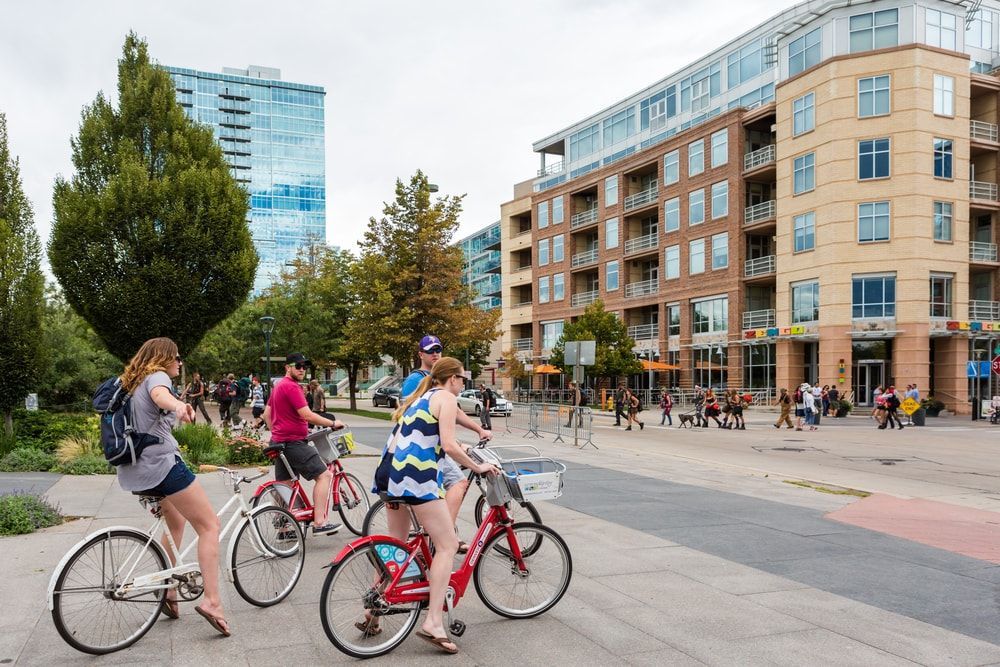
Denver, Colorado, ranks among the top 10 bike-friendly cities in the U.S. and is celebrated for its extensive bike trails and commitment to sustainability, including a LEED Platinum Certification. According to Census data, the city's dedication to promoting cycling is evident, with 0.8% of workers commuting by bike, highlighting Denver's efforts to foster eco-friendly transportation.
Bike infrastructure
- Denver boasts a comprehensive network featuring 196 miles of greenways, trails, and bike lanes, providing ample options for cyclists of all levels.
- A new regional bike-sharing program has been launched to increase accessibility, making it easier for residents and tourists to navigate the city on two wheels.
- The city completed more than half its goal to install 125 miles of bike lanes by 2024, demonstrating a strong commitment to sustainable transportation.
Annual cycling events
- Denver Century Ride: This annual ride tours diverse neighborhoods, parks, and trails across Metro Denver. Participants can choose from route options of 25, 50, 85, or 100 miles, with full support and safety services to ensure an excellent experience for all cyclists.
- Session Series: This weekly enduro series takes place over several dates from late spring to early summer and offers a unique blend of sport and environmental care.
- Karen Hornbostel Memorial Time Trial: A staple event at Cherry Creek State Park, this long-standing time trial series occurs in early spring. It's ideal for cyclists testing their speed in a competitive yet scenic environment.
- The Pikes Peak APEX: A multi-day mountain bike challenge on Pikes Peak with routes through dirt roads and trails, designed for those seeking a tough challenge.
Popular bike routes
- Cherry Creek Trail: A 45-mile path from Downtown Denver to Franktown, known for its scenic views and smooth pavement, perfect for casual and long-distance cycling.
- South Platte River Trail: This trail, about 34.24 miles along the South Platte River, connects different metro areas and offers scenic river and city views.
- Washington Park Loop: A 2.3-mile loop in Washington Park, ideal for quick, scenic rides in a popular setting.
- High Line Canal Trail: Nearly 71 miles through Denver neighborhoods and suburbs, it offers shaded, peaceful paths suitable for family and long-distance rides.
- Clear Creek Trail: This trail extends almost 20 miles from the South Platte River to Golden, providing mountain and Clear Creek views, perfect for active nature lovers.
6. Seattle, Washington
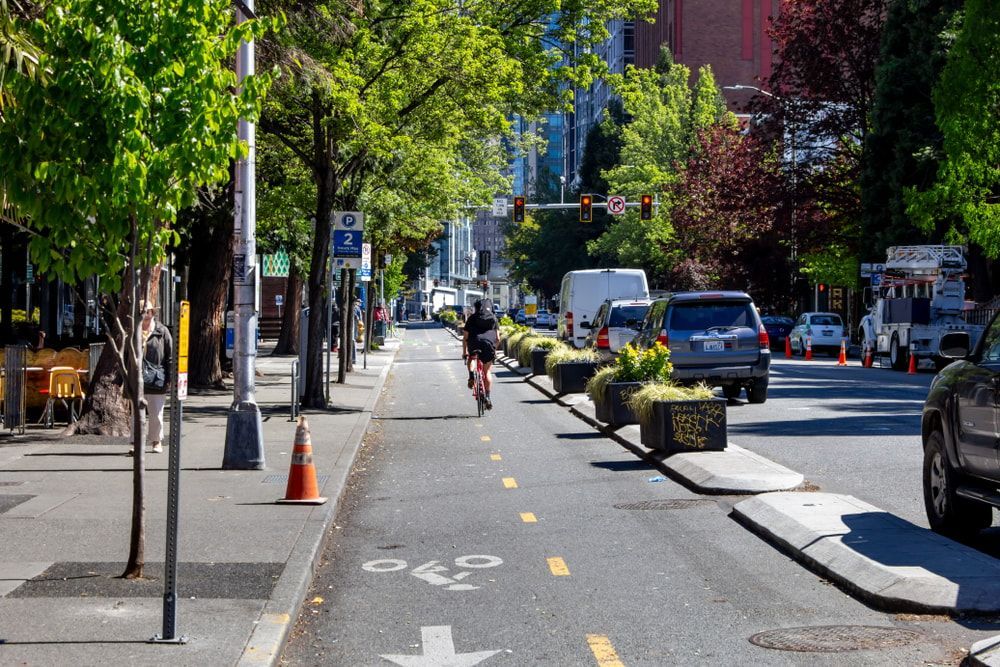
Seattle, Washington, is known for its lush landscapes and innovation and is enhancing sustainable transportation through its 2021 Bicycle Master Plan. The city invests $1.3 billion in cycling infrastructure and education to promote a robust bicycle culture. This initiative aims to make Seattle safer and more eco-friendly for cyclists.
Bike infrastructure
- Seattle's bicycle infrastructure boasts miles of protected bike lanes, with concrete buffers and cycling-specific traffic signals, ensuring a safe and enjoyable riding experience.
- The city's Vision Zero initiative, aimed at reducing bike and pedestrian deaths by slowing traffic and implementing traffic calming measures, has also been taken seriously.
- Seattle is developing 60 miles of low-stress neighborhood greenways to enhance connectivity to existing bike facilities, creating a comprehensive network for riders of all ages and skill levels.
Annual cycling events
- Seattle to Portland Bicycle Classic (STP): This iconic event is one of the largest bicycle rides in the country, where thousands of cyclists ride 200+ miles from Seattle to Portland.
- Chilly Hilly: Held on Bainbridge Island, just a ferry ride from Seattle, this event kicks off the cycling season in late February. Cyclists enjoy a 33-mile route around the island, featuring over 2,100 feet of climbing.
- Emerald Bike Ride: A unique event where cyclists ride on normally car-only freeways around Seattle, with varying routes each year.
- Bike Everywhere Day: Celebrated across the city, this event encourages people to bike to work, school, or wherever they need to go. It’s part of a national Bike to Work Day.
- Obliteride: This charity ride raises funds for cancer research at the Fred Hutchinson Cancer Research Center. Cyclists choose from various route lengths and enjoy a supportive community atmosphere.
Popular bike routes
- Burke-Gilman trail: A 27-mile trail from Ballard to Bothell, perfect for all levels of cyclists and known for its scenic views along Lake Washington.
- Alki Trail: This 5.5-mile waterfront path in West Seattle offers stunning views of Puget Sound and the Seattle skyline.
- Lake Washington Boulevard: A scenic route along the western shore of Lake Washington, popular for its traffic-free Bicycle Sundays.
- Interurban Trail (North): A 24-mile trail connecting Seattle to Everett, following the historic Interurban rail line.
- Green Lake Loop: This 2.9-mile loop around Green Lake is ideal for families and casual rides in one of Seattle's most popular parks.
7. Fort Collins, Colorado
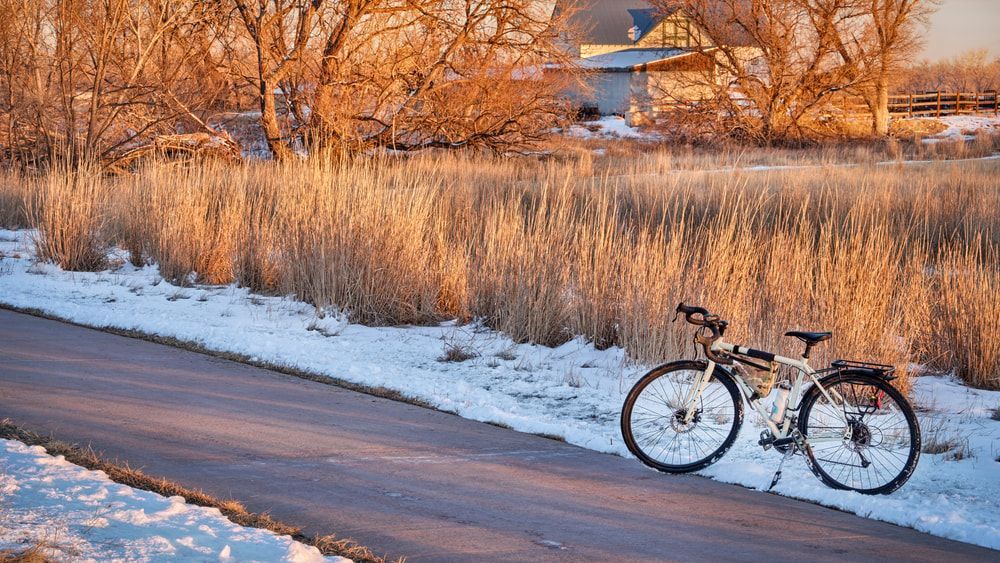
Fort Collins, Colorado, ranks prominently among the top bike-friendly cities in the United States. It appeals to nearly 7,800 commuters who choose cycling as their primary mode of transportation. Remarkably, this city maintains a very low cyclist fatality rate despite not having a dedicated Vision Zero plan.
Bike infrastructure
- Fort Collins has developed an extensive network comprising 280 miles of bike lanes and 50 miles of marked or signed bike routes.
- Fort Collins recently built a five-mile bikeway for less than $1 million by utilizing neighborhood bikeways, specifically the Pitkin Bikeway. It enhances the biking network connections and creates better streets for walking, skating, and other recreational activities.
- The city's active modes plan aims to enhance walking and biking infrastructure. This is achieved by adding separated bike lanes, installing high-visibility crosswalks, redesigning safer intersections, increasing street lighting, and managing micromobility parking.
Annual cycling events
- Tour de Fat: Sponsored by New Belgium Brewing, this unique event celebrates cycling culture by combining a costumed bike parade with craft beer, music, and entertainment.
- CSU Ram Bicycle Classic: Hosted by Colorado State University, this event includes several routes for all skill levels, highlights Fort Collins' roads, and supports university programs.
- Foco Fondofest: This event blends cycling with gourmet food. It features various route lengths through scenic areas and is followed by a festival with live music, local cuisine, and craft beer.
- Cross of the North: A major cyclocross event in Northern Colorado, offering multiple race days and categories for various ages and abilities.
Popular bike routes
- Spring Creek Trail: This 14-mile paved trail is perfect for riders looking for a scenic, leisurely ride. It winds through several parks and natural areas, including Spring Canyon Park.
- Poudre Trail: This 12-mile trail follows the Cache la Poudre River, offering stunning views and wildlife sightings. It is ideal for both recreational and long-distance riders.
- Foothills Trail: This 77-mile trail connects Pineridge, Maxwell, and Reservoir Ridge Natural Areas, featuring hilly terrain and great views of Horsetooth Reservoir.
- Mason Trail: The Mason Trail is a key north-south route through the city, heavily used for bike commuting and accessing areas like Colorado State University.
- Horsetooth Mountain Open Space: This area offers mountain bikers a network of challenging, technical trails with breathtaking mountain and reservoir views.
8. Boston, Massachusetts
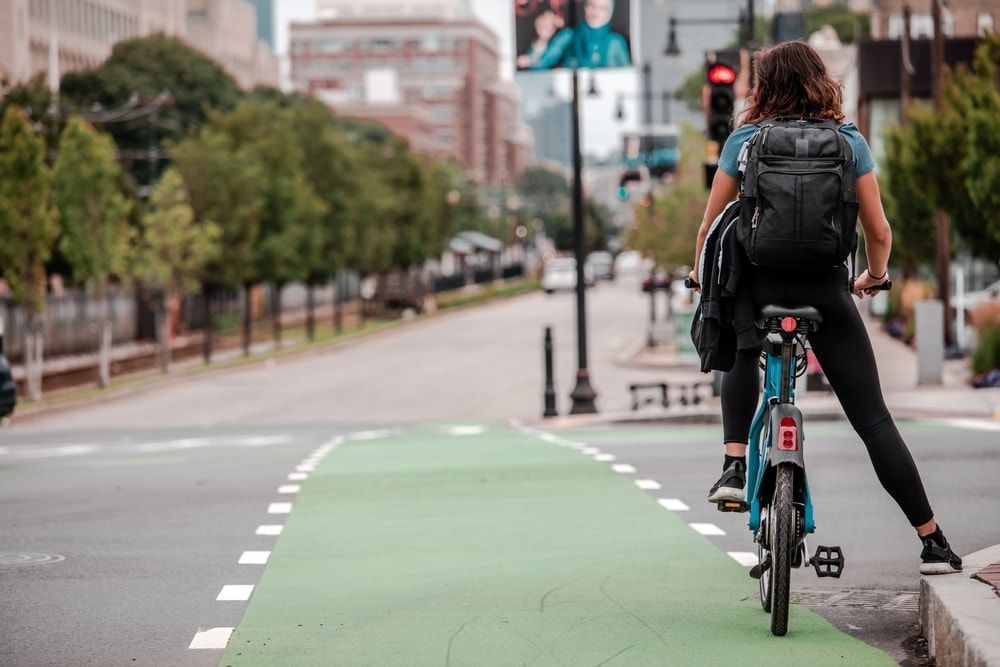
Boston has made significant strides in becoming one of the best bike cities in America. With a growing bike lanes and pathways network, Boston is becoming more cyclist-friendly yearly. The city has been focusing on infrastructure improvements to ensure the safety of riders, making it easier for residents to choose biking as a mode of transportation.
Bike infrastructure
- In 2009, Boston introduced Bluebikes, a comprehensive bike network to enhance urban mobility; the city plans to expand 15 miles of protected lanes by 2030.
- The Go Boston 2030 plan identified a new bike network expansion plan that aims to add 9.4 miles of new bike facilities, creating a low-stress bike network that is nearly 20% larger.
- In 2018, Boston committed to adding 15 miles of protected bike lanes, increasing safety for cyclists.
- Boston promotes cycling with 8.2 bike share stations per 100,000 residents and offers free passes to qualifying essential workers, ensuring widespread and equitable bike access across the city.
Annual cycling events
- Hub On Wheels: Takes place in September, allowing cyclists to enjoy a car-free Storrow Drive and ride through Boston’s neighborhoods.
- Bike to Work Day Festival: This occurs in May during National Bike Month, promoting cycling to work with a festival featuring food, music, and giveaways.
- Midnight Marathon Bike Ride: Held the night before the Boston Marathon, this informal ride covers the 26.2-mile marathon route.
- Bike-A-Thon: A June fundraiser by Bikes Not Bombs, featuring rides from 10 to 100 miles to support global and local bicycle-related programs.
Popular bike routes
- Charles River Bike Path: This scenic 23-mile path along the Charles River connects Boston to Cambridge and Watertown.
- Emerald Necklace: A 7-mile green route through parks designed by Frederick Law Olmsted, linking the Boston Common to the Arnold Arboretum.
- Minuteman Bikeway: A historic 10-mile trail from Cambridge to Bedford, following a former railroad route.
- Southwest Corridor Park: A 4.1-mile urban trail through South End, Roxbury, and Jamaica Plain, popular among bike commuters and leisure cyclists.
- Neponset River Greenway: A picturesque path from Lower Mills to the Dorchester Shores Reservation, great for family rides along the Neponset River.
9. Tampa, Florida
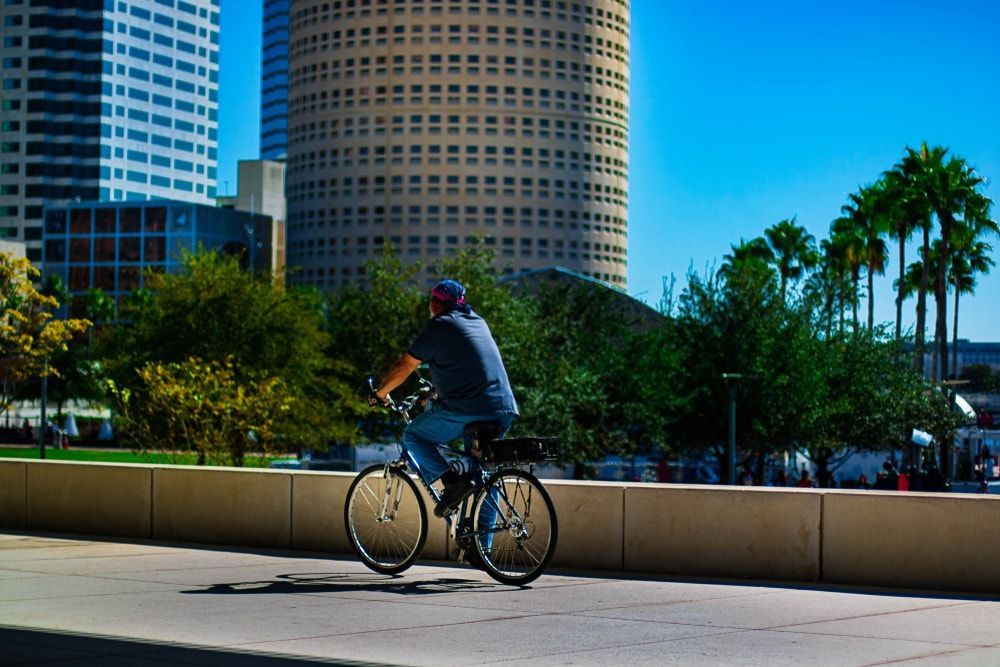
Tampa, Florida, is widely recognized for its bike-friendly attributes. It features 5.4 bike share stations per 100,000 residents, boosting accessibility for cyclists. Recognized in 2016 as a Bicycle Friendly Community, Tampa's commitment to promoting safe and convenient cycling has not gone unnoticed. The city was also ranked among the Top 50 Best Biking Cities, reflecting its commitment to fostering a supportive environment for cycling enthusiasts.
Bike infrastructure
- In 2019, the Florida Department of Transportation funded the installation of several bicycle repair and maintenance stations across Tampa. This initiative supports cyclists with convenient locations for quick repairs.
- Tampa offers 154 miles of bikeways, providing extensive routes for both recreational and commuting cyclists.
- There are 137 miles of dedicated on-street bike lanes, facilitating safer travel for cyclists alongside motor traffic.
- The city offers over 300 free-standing bike racks and six self-repair stations, making it easier for cyclists to find secure parking and maintain their bikes.
Annual cycling events
- Winter Wonder Ride: This holiday-themed cycling event, held in early December, takes participants through downtown Tampa and Bayshore Boulevard, ending with a concert at Curtis Hixon Park.
- Bikes & Beers Tampa Bay: Combining cycling with craft beer, this event features routes of 15, 37, or 52 miles starting and finishing at Cigar City Brewing. It includes a post-ride festival with craft beers, live music, and a charity raffle in early December.
Popular bike routes
- Bayshore Boulevard: A scenic 4.5-mile route along Hillsborough Bay with the world's longest continuous sidewalk.
- Flatwoods Park: A 7-mile loop through a natural preserve, ideal for an easy and enjoyable ride.
- Tampa Riverwalk: A 2.6-mile urban path along the Hillsborough River, connecting parks, museums, and eateries.
- Upper Tampa Bay Trail: A 7.25-mile trail through diverse landscapes, great for casual and more intense biking.
- Courtney Campbell Causeway Trail: A 10-mile trail with bay views, linking Tampa and Clearwater.
10. New York, NY
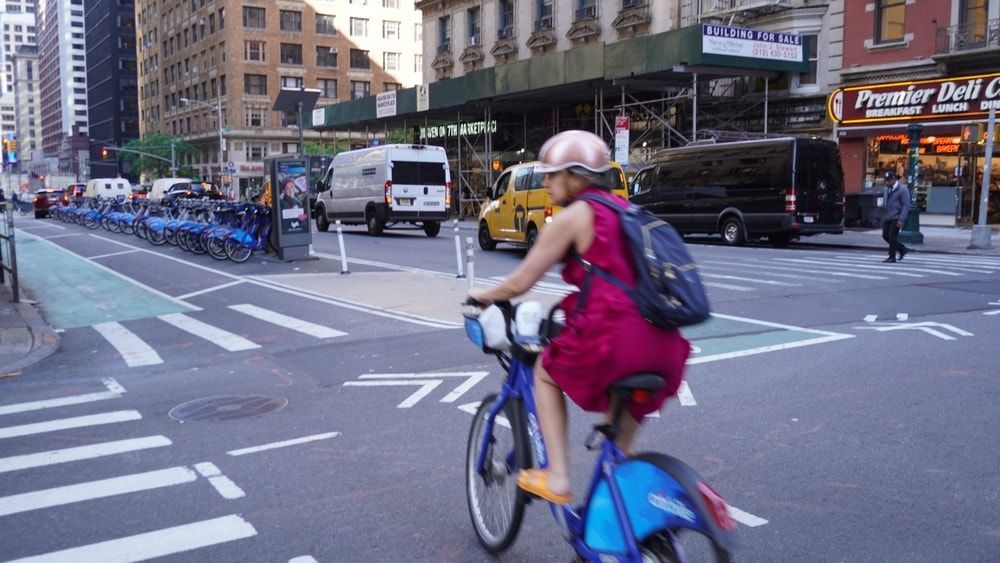
New York, NY, stands out as a beacon for cycling enthusiasts. With over 100 miles of bike lanes, New York City offers a diverse range of biking routes for residents and visitors alike. Between 2017 and 2022, the city saw a 25% increase in bike commuters, highlighting its ongoing commitment to enhancing bike infrastructure and promoting a cycling-friendly environment.
Bike infrastructure
- In September 2021, the city introduced a two-way bike lane on the Brooklyn Bridge, enhancing connectivity and safety for cyclists crossing this historic landmark.
- Installed 1,525 lane miles of bike lanes, including 644 lane miles of protected bike lanes, showcasing a significant boost in cyclist safety infrastructure.
- Over 100 miles of completed off-street Greenway paths provide scenic and safer routes for cyclists away from vehicular traffic.
- Plans to further secure cyclist safety by installing 250 miles of protected bike lanes by 2026.
Annual cycling events
- Five Boro Bike Tour: This iconic event allows cyclists to ride through all five boroughs of New York City on car-free streets, covering 40 miles and drawing around 30,000 riders annually.
- Tour de Bronx: New York’s largest free cycling event promotes cycling and showcases the borough’s historical landmarks, vibrant neighborhoods, and beautiful waterfronts.
- TD Five Boro Bike Tour: Similar to the Five Boro Bike Tour, this event is viral and offers a unique opportunity to experience the city’s diverse neighborhoods without the usual traffic.
- Bike MS NYC: This charity ride benefits multiple sclerosis research and care, offering routes that include major landmarks and stunning views of Manhattan.
- New York City Century Bike Tour: This challenging event offers several distances, with routes passing through various neighborhoods and parks, emphasizing the city's commitment to biking as a vital part of its transportation ecosystem.
Popular bike routes
- Hudson River Greenway: This scenic route runs along the western edge of Manhattan, offering breathtaking views of the Hudson River and ample green space.
- Central Park Loop: A classic ride that circles one of the world's most famous urban parks, providing a mix of natural landscapes and iconic city sights.
- Brooklyn Waterfront Greenway: Stretching from Greenpoint to Bay Ridge, this route showcases Brooklyn's diverse neighborhoods and waterfront vistas.
- East River Esplanade: This route offers a quieter ride along the eastern side of Manhattan, featuring views of the East River and several bridges.
- Prospect Park Loop: Located in the heart of Brooklyn, this loop is a favorite among local cyclists for its rolling hills and serene park environment.
Need Legal Assistance for Bicycle Accident? Contact Bike Legal Today!
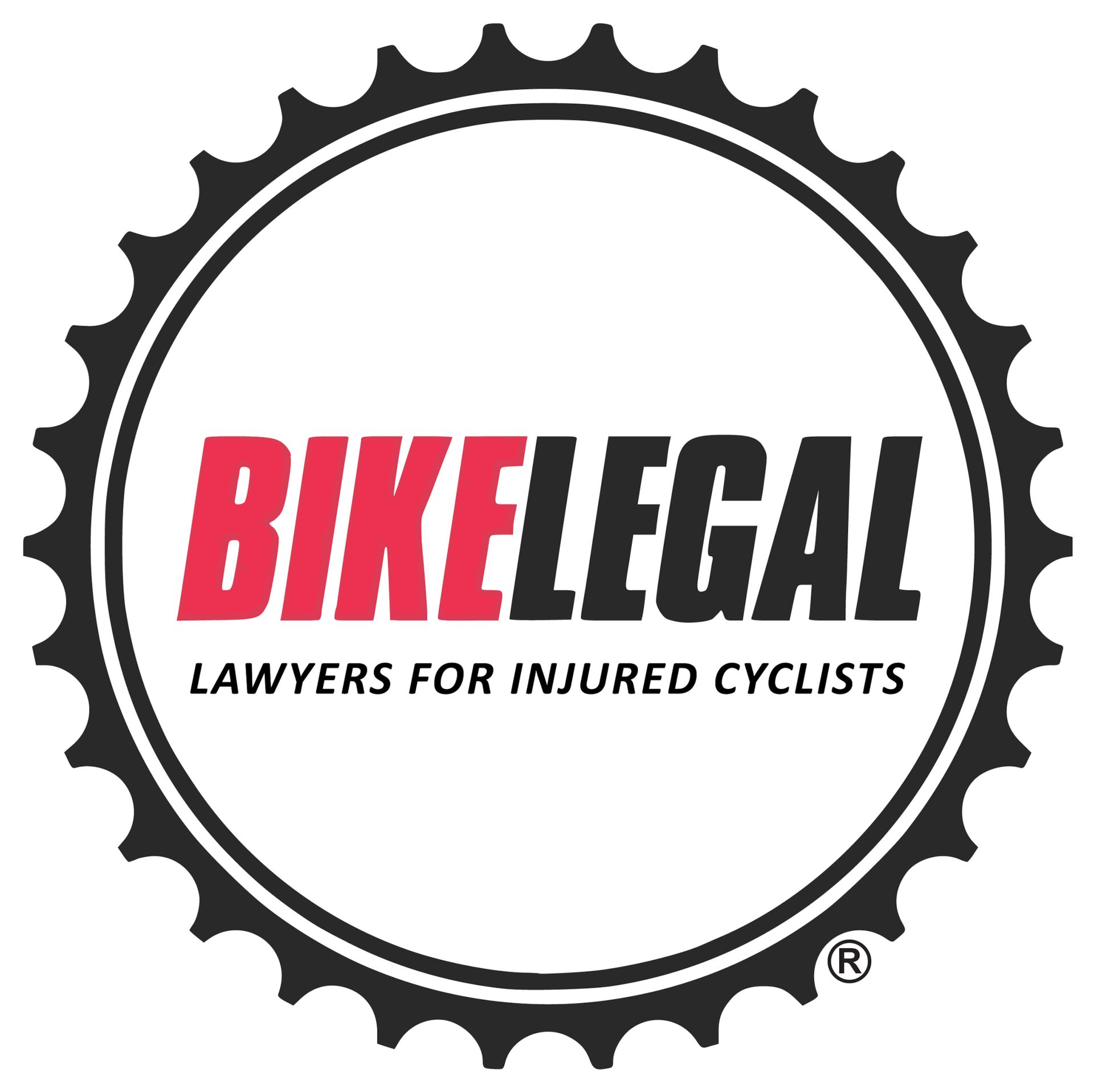
The rise of cycling in the U.S. has spotlighted the critical role of bike-friendly cities in encouraging this sustainable mode of transportation. These cities cater to cyclists ' daily needs through strategic infrastructure enhancements, supportive laws, and community-driven events and promote an active, sustainable lifestyle.
Key takeaways:
- Continuous improvements and expansions of bike lanes and trails are fundamental to supporting safe and efficient cycling.
- Awareness of local regulations, such as passing laws and helmet requirements, is essential for safety and compliance.
- Participating in community events boosts cycling culture and encourages sustainable transportation.
Exploring bike-friendly cities is great, but cycling comes with its risks. If you ever find yourself in a cycling accident, face legal hurdles, or need advice on cycling laws and your rights, Bike Legal is here to help.
We offer unparalleled resources, personalized access 24/7, and a team deeply rooted in the cycling community. Our expert attorneys are skilled in handling personal injury claims, negotiating with insurance companies, and providing specialized legal advice.
For a free case review with our experienced bicycle accident lawyers, submit a form or contact us today at 877-BIKE LEGAL (877-245-3534).
